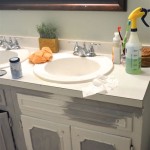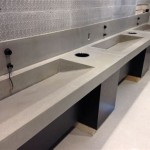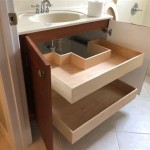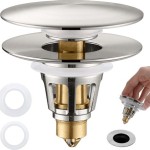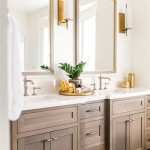Bathroom Vanity Tops Without Backsplash: Considerations and Design Tips
Bathroom vanity tops often serve as the focal point of the room, defining the space’s style and functionality. While backsplashes are common additions for protecting walls and adding a decorative element, some homeowners opt for bathroom vanity tops without backsplashes. This choice offers unique design possibilities and considerations that are important to understand for achieving a cohesive and practical bathroom environment.
Benefits of Bathroom Vanity Tops Without Backsplashes
Choosing a bathroom vanity top without a backsplash presents several advantages. It creates a clean and uncluttered aesthetic, allowing the vanity top to stand out as a design statement. This approach can particularly enhance the ambiance of smaller bathrooms by visually expanding the space. The absence of a backsplash can also contribute to a more minimalist and contemporary design, making it a popular choice for modern bathroom styles.
Furthermore, the omission of a backsplash simplifies the installation process. This can be especially beneficial for DIY projects, as it eliminates the need for additional materials and specialized skills required for backsplash installation. The cost savings associated with not installing a backsplash can also be significant, allowing for greater flexibility in allocating budget for other bathroom improvements.
Choosing the Right Materials
When opting for a bathroom vanity top without a backsplash, material selection becomes paramount. The chosen material must be durable, moisture-resistant, and capable of handling everyday wear and tear. Some popular choices include:
Granite and Marble: These natural stones are known for their beauty and durability. Their inherent resistance to moisture and scratches makes them suitable for high-traffic areas like bathrooms. However, they require regular sealing to maintain their shine and prevent staining. Quartz: Quartz is an engineered stone that offers the durability of natural stone with added benefits. It is non-porous, resistant to stains and scratches, and requires minimal maintenance. Its wide range of colors and patterns allows for diverse design possibilities. Solid Surface: Solid surface materials are non-porous and seamless, making them highly resistant to moisture and stains. They are available in a variety of colors, patterns, and textures, offering versatility for bathroom design. Laminate: Laminate is a cost-effective alternative to natural stone and solid surface. It offers good durability and moisture resistance, but its longevity may be less than other materials.
Design Considerations for Bathroom Vanity Tops Without Backsplashes
Designing a bathroom with a vanity top without a backsplash requires careful consideration of several factors. The absence of a backsplash necessitates careful planning to prevent water damage and maintain a clean aesthetic.
Wall Protection: Consider using waterproof paint or a moisture-resistant wall covering behind the vanity top. This helps protect the wall from splashes and ensures a clean look even in areas prone to moisture. Faucet Placement: The faucet should be positioned strategically to minimize splashing and prevent water from reaching the wall. A wall-mounted faucet can reduce the chance of water reaching the wall, while a deck-mounted faucet with a high spout can help direct water flow away from the wall. Storage Solutions: Incorporate storage solutions to keep toiletries organized and prevent clutter. Vanity cabinets, shelves, or drawers can help keep towels and other bathroom essentials within reach and create a neat and organized appearance. Lighting Strategy: Strategically placed lighting can enhance the appearance of the vanity top and bathroom. Consider using a combination of overhead and task lighting to illuminate the vanity area effectively and create a warm and inviting ambiance.
By carefully considering these design considerations and incorporating appropriate materials, homeowners can create a beautiful and functional bathroom with a vanity top without a backsplash. This approach offers a modern and minimalist aesthetic while ensuring the durability and practicality of the space.
Backsplash Advice For Your Bathroom Would You Tile The Side Walls Too Designed

Do Bathroom Vanities Need A Backsplash
Backsplash Advice For Your Bathroom Would You Tile The Side Walls Too Designed

Backsplash Or No Glasseco

Removing The Side Splash Backsplash From Our Bathroom Sink Young House Love

Side Splash Or No

Diy Concrete Vanity Countertop The Inspired Work

Backsplash Advice For Your Bathroom Would You Tile The Side Walls Too Designed

Bellaterra Home 203131 Bathroom Vanity Black Wood Cabinet

A Better Alternative To 4 Inch Tall Backsplash
Related Posts
